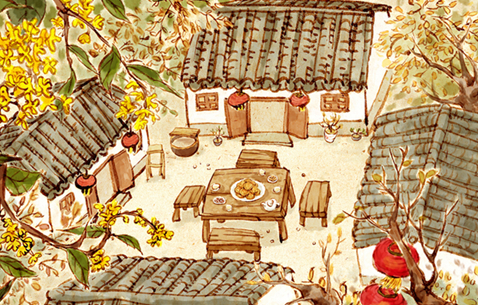古人已开始用盛宴庆祝重要仪式
|
Whether the occasion is a wedding reception(婚宴) or another milestone in life, the feast is a time-honored ritual(仪式,惯例) in which a large meal marks a significant occasion. We know that the Romans, Greeks and Vikings did it, and today it's still an active part of occasions such as birthdays, weddings and anniversaries. Now a University of Connecticut (UConn) anthropologist(人类学家) says there is new evidence that nearly 12,000 years ago, feasts were used to celebrate burial of the dead, bringing about the world's first established communities. UConn Associate Professor of Anthropology Natalie Munro and a team of scientists found clear evidence of feasting at the ancient Hilazon Tachtit Cave burial site near Karmiel, Israel. Unusually high densities of butchered tortoise(乌龟) and wild cattle led them to conclude that the Natufian(纳图夫人) community members who lived in the area at the time gathered at the site for "special rituals to commemorate the burial of the dead, and that feasts were central elements." Some 14,500 to 11,500 years before the present, the Natufian people occupied the area around Karmiel, near the Mediterranean Sea. They lived there during the region's pre-Neolithic period, which marked the end of the very long Stone Age period. "Feasting [...] is one of humanity's most universal and unique social behaviors," the researchers write in their report published in the Aug. 30 early online edition of Proceedings of the National Academy of Sciences. "Our paper documents the first good evidence for feasting in the archaeological(考古学的) record that we know of," said Munro. She said that although many researchers believe feasting likely began with the emergence(出现,浮现) of modern humans, compelling(引人注目的,强制的) supporting proofs have not been found. Detection of feasting nearly 12,000 years ago may signal important culture changes. The Natufian people were the first to settle into more or less permanent communities and the act of settling would have been a time of social and economic upheaval. Prior to this, populations were more mobile and could separate into smaller groups for food and other resources to deal with disputes. But, settling down probably strained social relationships. The researchers theorize that feasts may have played a significant role in easing the potentially rocky transition from a hunting-gathering lifestyle to one of agricultural dependency. "Sedentary(久坐的,定栖的) communities require other means to resolve conflict, smooth tensions and provide a sense of community," said Munro. "We believe that feasts, especially in funerary contexts, served to integrate communities by providing this sense of community." Funerals may have provided special opportunities to bring communities together to mark the last event in a person's life and send the deceased(死者) off to another life. Instilled with additional layers of spiritual meaning, they may have provided an opportunity to commemorate an individual's life and soothe(安慰,缓和) social disputes. And it appears that feasts would have played a significant role in that. The discovery of cattle and other animals at "Hilazon Tachtit testifies to symbolic and ritual continuity with the succeeding Neolithic cultures," the researchers write. "This continuity in tradition emphasizes the importance of local contributions to the agricultural transition(过渡,转变) ." |








